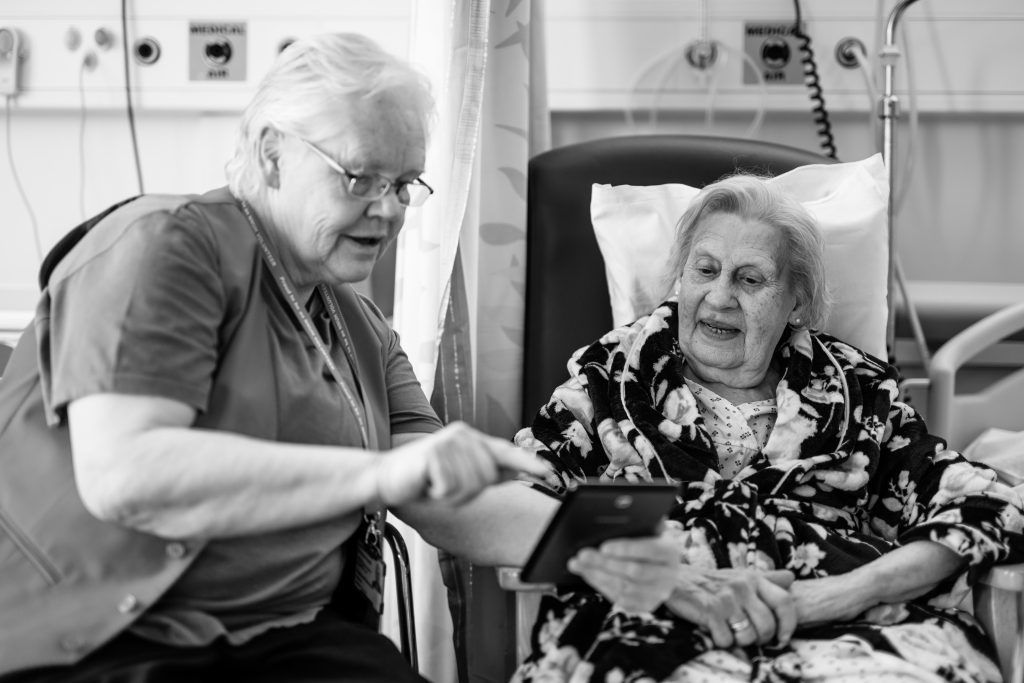COVID-19 A guide to video conference programmes
29th March 2020

Written by Christabel Jay, Office Manager at Helpforce
With more and more people working from home or self-isolating, I thought it would be ideal to post some useful information on the video software that we use or know of within Helpforce. I am proud to say that we are a team based all over the UK. Phone and emails are good but, when you want to have the extra interaction, video software comes in very handy.
Here is a summary table that I have done to give you a quick look (Note: This is based on video calls only, webinars may incur an additional cost.)
Now, I know some NHS Trusts or healthcare organisations have different IT structures; some more sensitive than others. It has to be sensitive to cater to the data being handled. So I have written more details about each programme in the section below.
It’s not just a comic book sound effect but, also a handy bit of video conferencing software. It is free! And, you can call/video conference someone for free but, the session will only last 40-minutes per call. So, if you want a long conference call, this isn’t ideal. You can opt-in for the paid subscriptions which you can view here. Zoom does offer a non-profit discount, pending the charity application. But, they could be flexible with hospitals requesting to use the software and apply a discount. Their sales staff are always helpful.
From scheduling a meeting/webinar to joining, it’s extremely user-friendly. It’s also very interactive with polls, whiteboard and creative background solutions.
Zoom also has an app, and by entering a simple meeting ID or webinar ID followed by your name and email address, you’re in! The app is also free and can be downloaded through your relevant app stores. For Helpforce hosting external meetings with partners, clients, etc this is the favourite option. Also, our Learning Network advocates, Sally and Vy swear by it for their webinars. But, we understand that not everyone can access Zoom.
I believe a lot of you already use Microsoft teams; previously known as Skype for Business but, Microsoft announced in recent months that it’s changing to Teams by March 2021. At present, we use this to connect with Trusts whose IT system dislikes Zoom. We want to ensure we can reach everyone within the health care sector.
It’s a very easy platform to chat and quickly call an individual or team if you create one. Most of the time users will need a Microsoft license and you can add guests. However, they just won’t have the same ‘permissions’ as the others who have a license.
Teams also provide the option to host a live event (webinar) to the public or groups. If you’re a bit of a techy, then you can see the different roles involved with the Live Events here.
On the 5th March Microsoft’s Corporate Vice President demonstrated the different ways to access Microsoft Teams, particularly during these trying times with the C-19 virus. Click here to read further.
Before we signed up to Zoom we used GoTo Meetings & Webinar. GoTo is a detailed system so it’s perfect for those who like to dive into the techy side. It’s for those who like detail whereas, if you prefer something simple and easy then I’d personally recommend Zoom or Microsoft teams.
However, in providing a detailed system comes the option to make the meeting or webinar your own. So, it depends on your requirements. Non-profits are provided with 50% discount (subject to application) but, do contact the sales team for further clarity.
Helpforce uses Hangouts for all of our internal communications; video and conference calls. The main reason being, we use the Google suite cloud solutions within our Helpforce domain so, Google Hangouts Meet is part of G-suite when you get started. We find it extremely easy to set up calls, share them, invite others and it’s mostly done through Google calendar. It makes for a seamless process as they’re all integrated.
I appreciate this isn’t relevant to all NHS Trusts as some cannot connect to Google Hangouts Meet but, for those who do have flexible systems, it’s worth considering. We use it internally for these exact reasons. If everyone cannot access this then, we may as well use it internally for our team.
When we were torn between Zoom and Click Meeting, we had a short free subscription (7-days) to test if it worked with other health care partners. While we didn’t go with Click Meeting’s subscription at the time, it was still extremely simple and user friendly. I have mentioned simple a lot but, during these uncertain times sometimes, simple is better. Click Meeting hosts conference calls and webinars, even boasting a live stream feature. Click meeting is also offering some of its services for free, click here to read more.
A lot of digital software businesses have been understanding and savvy when it comes to offers for remote working. Even though it’s the norm for many, it still caters to those who work within the health sector. For example, if you want to maintain contact with volunteers who’re self-isolating at the moment then, this is a great way. Even for the admin teams who’re also keeping the NHS afloat, video conferencing is an easy and safe way to communicate. I do hope this article helps if you are considering video conferencing software.
